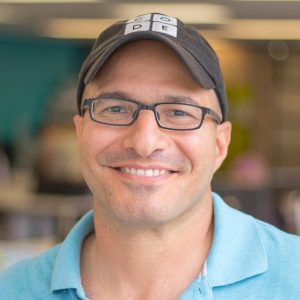CSBA’s 2020 virtual Annual Education Conference is fast approaching, with the Dec. 3–4 conference set to deliver attendees critical insights, informative sessions, digital interactivity and powerful speakers. Virtual preconference activities are happening from Nov. 30–Dec. 2. Visit aec.csba.org by Nov. 24 to register.
This year’s General Session speakers offer an incredible array of talent and perspectives: Jason Dorsey, president of the Center for Generational Kinetics; Hadi Partovi, CEO of the education nonprofit Code.org, tech entrepreneur and investor; and Leslie Odom Jr., multifaceted Tony and Grammy Award-winning performer.
California School News spoke with Partovi about the importance of digital literacy during distance learning, closing the digital divide and what progress the leading provider of K-12 computer science curriculum has made in making the subject more accessible for all students.
What light has the pandemic shed on the importance of computer literacy, particularly with the massive shift to distance learning?
Even before the pandemic, it was pretty clear that computers and digital technology were important, and not only just important in society, but needed to play a larger role in education. At this point, with every teacher in the country having experienced school shutdowns and having to cope with distance learning, what the pandemic has made clear is that every teacher needs to know how to use computers and every student needs to be digitally literate. In the past, it seemed like a ‘nice to have.’ In 2020, it became a ‘must have’ for our students and our teachers to have basic digital literacy.
Code.org has developed guidance for teachers in virtual and socially distanced classrooms. What does, and what can, computer science look like this school year?
It’s important to reflect that people assume that if you’re learning computer science, you’re just doing work on a computer the whole time, and that’s not the case. There’s actual real classroom stuff that happens with a role for the teacher and interaction and collaboration with students. Roughly half of our curriculum is stuff that is designed for face-to-face student interaction — not on the computer and no screen time. For us to adapt that and help teachers bring that to distance learning was not easy.
What can or should be done to close the digital divide? How prevalent is the issue and are there any insights can you offer?
You can look at this as glass half empty or half full. The glass half-empty view is that this pandemic widened the digital divide. The gap between rich and poor or between white versus not white or between suburban versus rural … those gaps widened immediately in March in terms of we can see that in the student data on Code.org. We can see the increase in all those gaps because of who had access to the internet or who had parents at home encouraging learning.
But the glass half-full view of this is that there’s so much money that has now been made available, whether it’s from corporate giving programs or from the government toward providing devices and internet access. Because in a pre-pandemic world, every kid goes to school and every kid has a public school available in their neighborhood to them. It wasn’t a big deal if every kid doesn’t have internet access and a computer at home. I think two, three years from now, we’ll look back at 2020 as the year that universal internet access and universal device availability became real calls for the education and equality opportunity that they offer.
Since Code.org’s inception in 2013, what progress has been made in expanding access to computer science for young women and students from other underrepresented groups?
In terms of the numbers of young women and students of color, that’s been an incredible story of growth. If you look at the total numbers, 20 million young women have started coding on Code.org. Over 10 million Black students alone have started coding on Code.org. It’s incredible, the total scale of students. If you look at the students taking an advanced placement exam in high school, we’ve seen tenfold growth in the number of women, Black and Latino students in computer science in just seven years.
From the percentages, there’s also been growth, but it’s not nearly as much and there’s a long way to go. AP computer science went from 17 percent female to almost 30 percent female — far from 50/50. Similarly, among students of color, there’s been an increase among underrepresented racial and ethnic groups in computer science as a percentage basis, but it’s nowhere near balanced representation. Even access to computer science in schools is predetermined to some extent by race. Black students want to study computer science more than white students. Their parents especially want them to learn computer science more than parents of white students, but their schools are less likely to even teach it.
Why should board members attend your talk at AEC?
One of the things I’m going to be talking about is new research showing that students who study computer science outperform their peers at reading, at writing, at math, at science, at problem-solving, at graduating and going to college and making money longer-term in their careers. This isn’t just students who go to tech. Third-graders who study computer science outperform third-graders who don’t at math and science and reading and problem-solving.
Part of the message of Code.org has shifted from, “This is computer science as a pathway to jobs or opportunities,” to just say, “Your children will learn the basics better. They’ll pass tests better.” Teaching computer science will help the students get there ahead of other students. For the schools who don’t do that, especially at a time when distance learning and learning on a computer is more relevant, it seems like an imperative at this point.
This interview has been edited for length and clarity.





